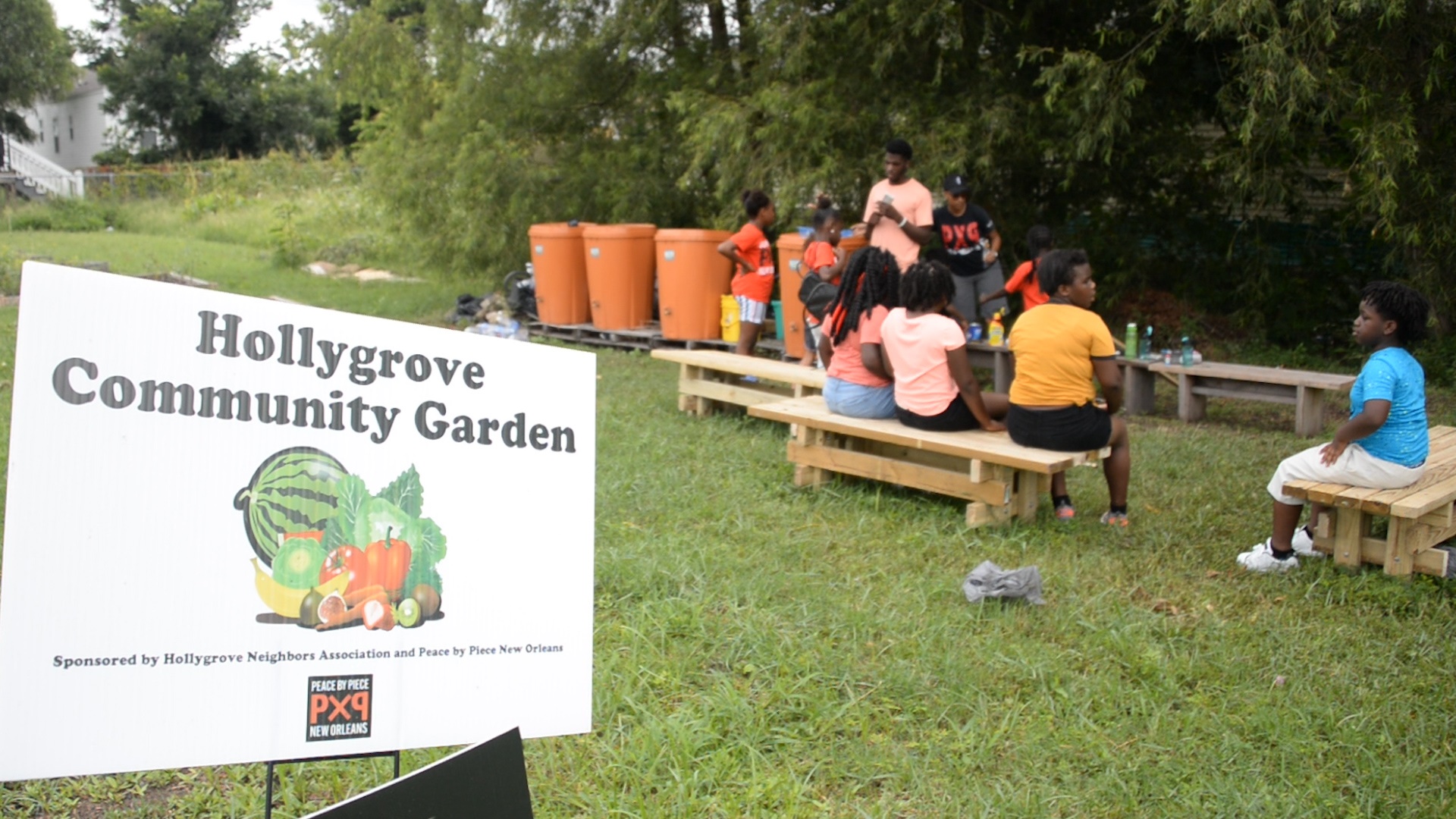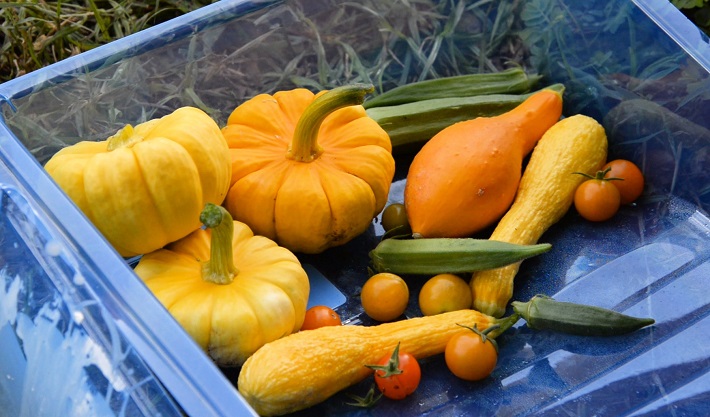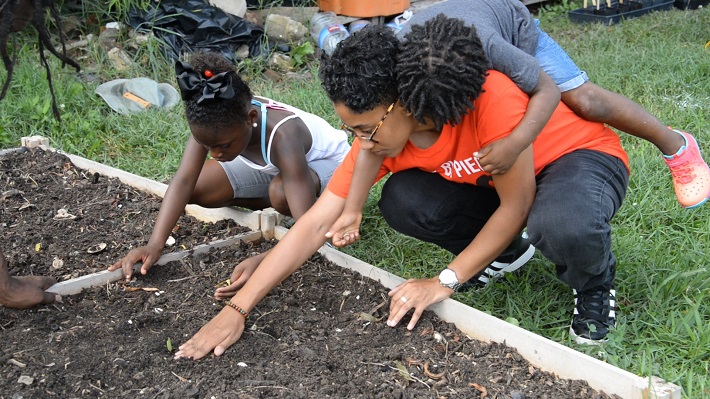
Hollygrove garden Nathaniel Doubleday / AFSC
“We want them to learn the process for themselves and see: I planted this seed, I watched this grow, I grew that plant, I grew my food,” said Brunisha Jones, a member of AFSC’s New Orleans Peace by Piece program. Showing young people how food is grown, where it comes from, and getting them excited about fresh vegetables are key components that make the New Orleans Hollygrove garden project thrive. Tabitha Mustafa, the Peace by Piece program associate puts it simply, she said, “I don’t think that you can heal any part of the community or neighborhood without first healing yourself and I think part of that starts with proper nutrition.”
The New Orleans staff is creating a Sanctuary space for New Orleans youth by offering a place to learn to grow their own food and feed themselves and their community.
Dee Dee Green, program director, Tabitha Mustafa, program associate, and members of the program have built 17 garden beds in the Hollygrove neighborhood and have started teaching classes to local children inviting them to take part in the growing of their food. The children involved are able to learn processes such as photosynthesis in addition to helping with all the hands-on tasks: watering, planting, harvesting, etc.

Hollygrove is a neighborhood in New Orleans’s 17th ward that experiences food insecurity, there are few grocery stores and there is limited access to fresh produce. Through the program AFSC staff has collaborated with members of St. Peter A.M.E. church and the Hollygrove Neighbors Association to build a community garden and sanctuary space to reduce the food scarcity that the community experiences. Through the cultivation of this space, community members grow their own food and obtain food sovereignty: the right to define their own food system and take ownership over it.

Dee Dee said, “Every community has the right to define what safety is to them. Every community or neighborhood has the right to determine what spaces are sanctuary.” This project is about listening to community members and their needs. Tabitha says, “Overall I think the sustainable communities project is meant to help make communities healthy and whole but not from an outside perspective, from people who live and work in the community helping each other to make the community stronger, safer, and more sustainable for the future.”

The community garden acts as a sanctuary space and provides education around systems of oppression and economic injustice while being completely in the hands of local Hollygrove residents to make positive changes within their community. Dee Dee works with the local community members most affected by food injustice and they have the first say in decision making concerning any new program implementation that may take place.
While farming has been a key component in building sanctuary in different urban spaces, it’s only a piece of the puzzle. In the end it is the wholistic goal of “individual and community sustainability that drives the work.” By reclaiming and repurposing land, AFSC staff is building power from grassroots organizing and encouraging critical understandings of social justice inequities in neighborhoods across the country. The end goal is to help pave the way for individuals and communities to claim their power.
Learn more about the New Orleans' Peace by Piece program: